Mount Auburn Statuary: A New Way of Seeing: A Conversation with Madge Evers and Thierry Borcy
Jessica Bussmann March 1, 2023 Art
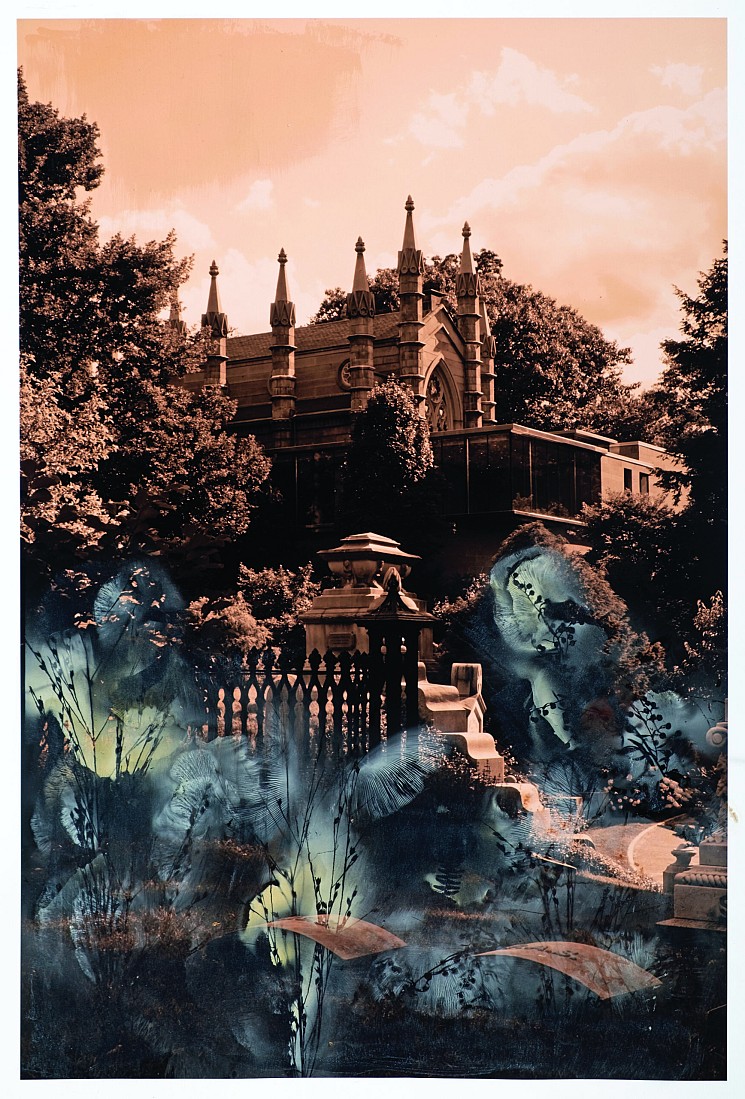
In 2022, we welcomed seven Artists-in-Residence to create original works inspired by their experiences at Mount Auburn. Meet Visual artist Madge Evers and photographer Thierry Borcy. This interview was originally published in March 2023.
____________________________
Could you please tell us about yourselves, your artistic career, and your artwork in general?
Thierry: First and foremost I am an outdoors person. My love of nature goes back to my childhood when I was raised on a farm in the north of France. Very much like all country kids, I would roam around in the woods, fields, and by the rivers. I would often miss the call of the bell at dinner time and get myself in a lot of trouble.
To this day, the streams, the tall trees, the fox den and the smell of hay capture my whole being. I find them as essential to my well-being as air is to life. I have found in New England a new home and hiking Mount Monadnock in New Hampshire has become my most favorite spot. I especially like water. The sound, beauty and energy from waterfalls in particular captivate me and the rushing waters of spring refresh my spirit.
My first encounter with black and white photography came about as a teenager. A friend of my parents visited and took photos of my cat. The subsequent prints revealed depth, soul, shapes and textures which were almost palpable. The same way as today I see shape and forms and not so much a tree or a stream. I see black, gray and white where there is color. Paradoxically the art of black and white photography makes me appreciate colors even more.
Madge: I’m an educator, gardener, and visual artist interested in the transformative qualities of growing cycles and regeneration. I’ve been paying close attention to signs of fungi since 2015, when I began making mushroom spore print art. My practice involves foraging for mushrooms and plants, and sometimes includes the cyanotype process and paint. I create biomorphic work on paper that literally depicts plants and fungi, but more figuratively reflects our entangled dependence with the changing environment.
What was the inspiration for and meaning behind Mount Auburn Statuary: A New Way of Seeing?
Thierry: A New Way of Seeing conveys in a visual format the possibilities of the afterlife. Death is another stage of life, it is the spirit life, void of the encumbrance of the physical body.
Madge: I’m a lover of plants and trees and admire the Cemetery’s commitment to flora, but have always been drawn to the Cemetery’s monuments. They’re durable embodiments of individual longings but also of collective pasts – all that’s come before. Until I began doing research, my impression of the monuments was that they were designed to last forever. I wasn’t aware of the fragility of these human-created objects, that they need tending, like the plants and trees, and that statuary are subject to the elements and the passing of time, both physical and historical. Our project looks at the monuments and statuary at Mount Auburn Cemetery not as static objects, but as ones of transformation. Together with plants and mushroom spores, the statuary are part of an ever-changing landscape.
Have you two collaborated before? What was the motivation for working together on this project? How is your artistic process different when doing solo work vs. collaborating with another artist?
Thierry: We have never collaborated before. It was like diving into the unknown in a very creative way. The motivation for working together was the idea of transformation and rebirth. It was moving photography from static to living. The idea of combining my photography with a living organism was exciting and the results turned out to be fantastic. There is a need for a lot of communication, to turn oneself from introvert to extrovert. You have to exchange ideas and opinions. The sharing of skills becomes necessary and is welcome. It is a growing experience of sharing, proposing ideas, letting go and starting over until both of us are happy.
Madge: This is our first collaboration. Thierry and I met at cyanotype workshop in the summer of 2020. I admired his beautiful landscape photography, especially the way he conveyed the tranquility of nature. Initially, I envisioned a project that focused on Mount Auburn’s statuary, with an idea to create spore prints on top of photographs. It was fortuitous then that Thierry approached me about a collaboration. I knew he could capture Mount Auburn’s peaceful landscapes and monuments in a special way.
I sometimes say that my artistic process is a collaboration with mushrooms and plants, but it’s actually more of an interdependence with those materials. Collaboration with another artist is a mixture of letting go and discovery. In some ways, I had to let go of a specific vision and allow for the inevitable surprise of the imagery that Thierry created. We walked the grounds together and discussed different statuary, but Thierry visited the Cemetery on his own to take pictures. His selection of objects and use of framing produced beautiful photographs with a mixture of modernity and tradition that are wonderful to look at on their own, but that also made room for the transformative possibility of spores.
Thierry, What areas or features were you drawn to when photographing the Cemetery?
The rolling scenery, variety of monuments, styles and discoveries at every corner are very attractive features. The activity and liveliness at the cemetery create possibilities for art that are limitless. I have never experienced this feeling in a cemetery before.
Madge, Can you tell us more about the mushroom spores you collect and use to alter Thierry’s photographs?
Inside the gills and pores of mushrooms are millions and millions of tiny seed-like spores. When ready, a mushroom will release those spores with the intention of spreading its genetic material around. Different species of mushrooms have different colored spores. Mycologists and foragers use spore color to help with mushroom identification in a process called spore printing. To make a spore print, one places a mushroom gill or pore side down on a sheet of paper, often covering the mushroom with a glass or bowl so the spores fall straight down onto the paper. After several hours, the mushroom is removed and the powdery spores remain on the paper, often with photographic-like detail of a mushroom’s gills or pores.
I’ve adapted the mushroom spore print in form and media to make works on paper and used this process to alter Thierry’s photographs. I began by coating selected areas of Thierry’s photographs with a material that helps the mushroom spores adhere. I foraged for mushrooms in the woods and, while it was a very dry year, did find Dryad’s Saddle (one of my favorites) and Oyster mushrooms, plus others. I then placed dried plants onto Thierry’s photographs, place the mushrooms on top of the plants and waited for the mushrooms to release their spores.
What is your favorite season at Mount Auburn?
Thierry: Fall is my favorite season. It’s a time of joy and introspection. Winter is my close second with the minimalistic scenery that opens up before your eyes.
Madge: All seasons are lovely at Mount Auburn, but summer is my favorite!

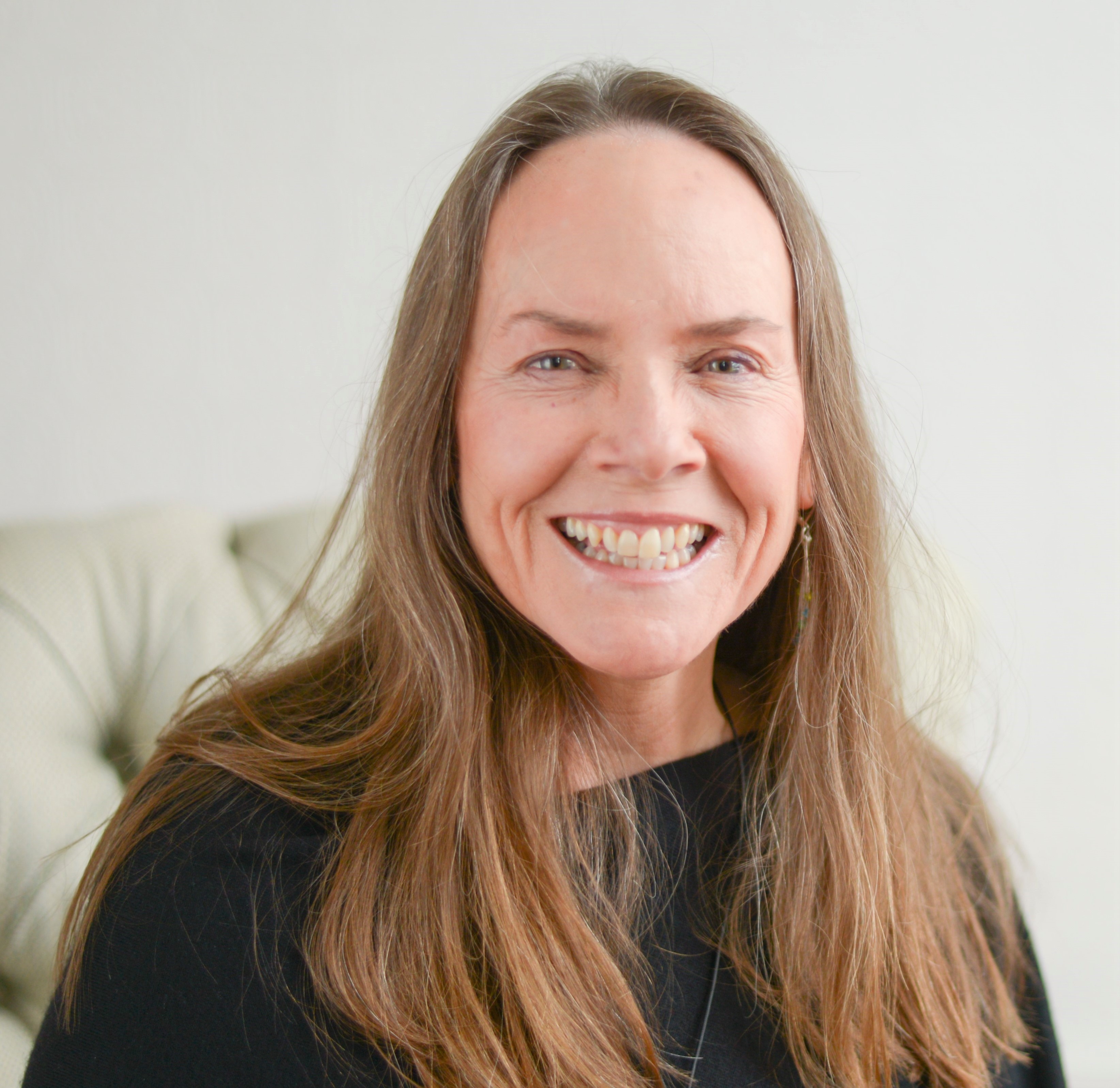

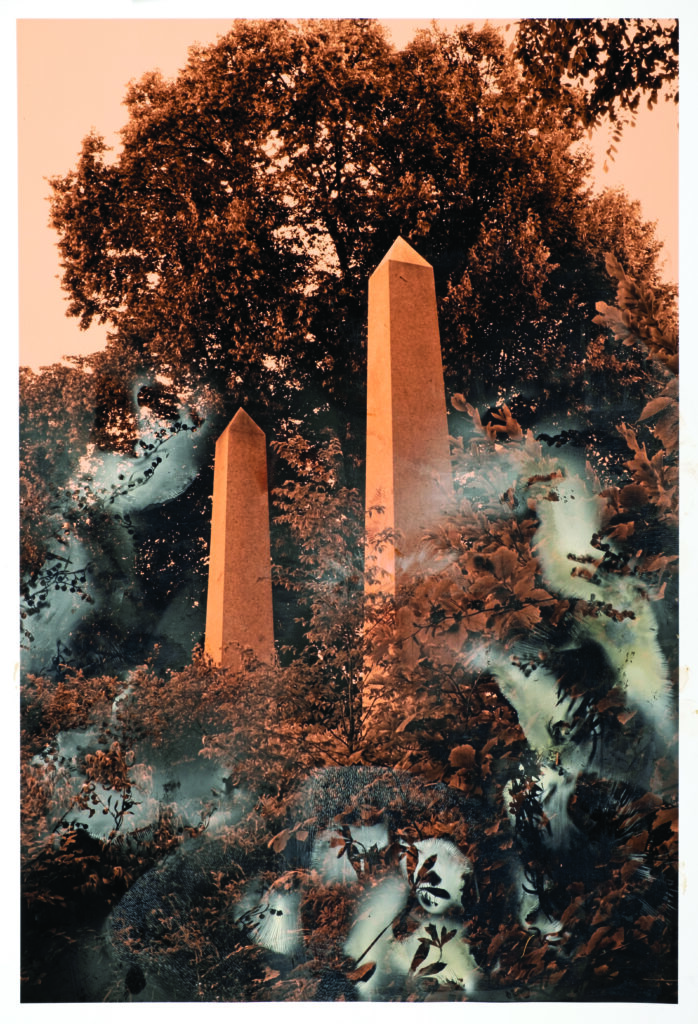
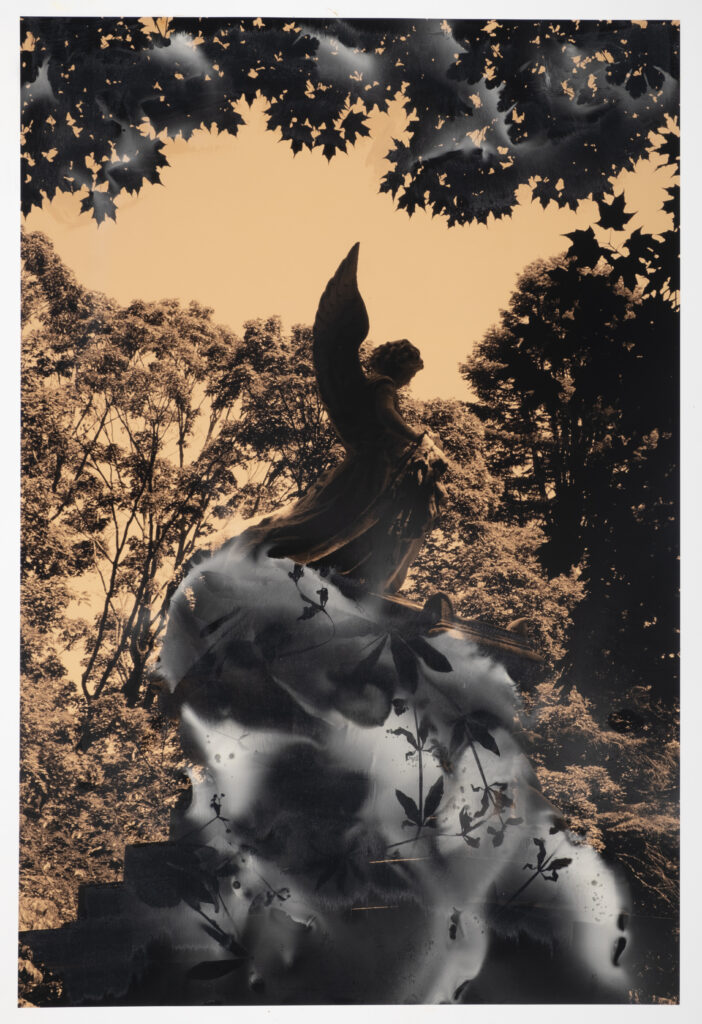
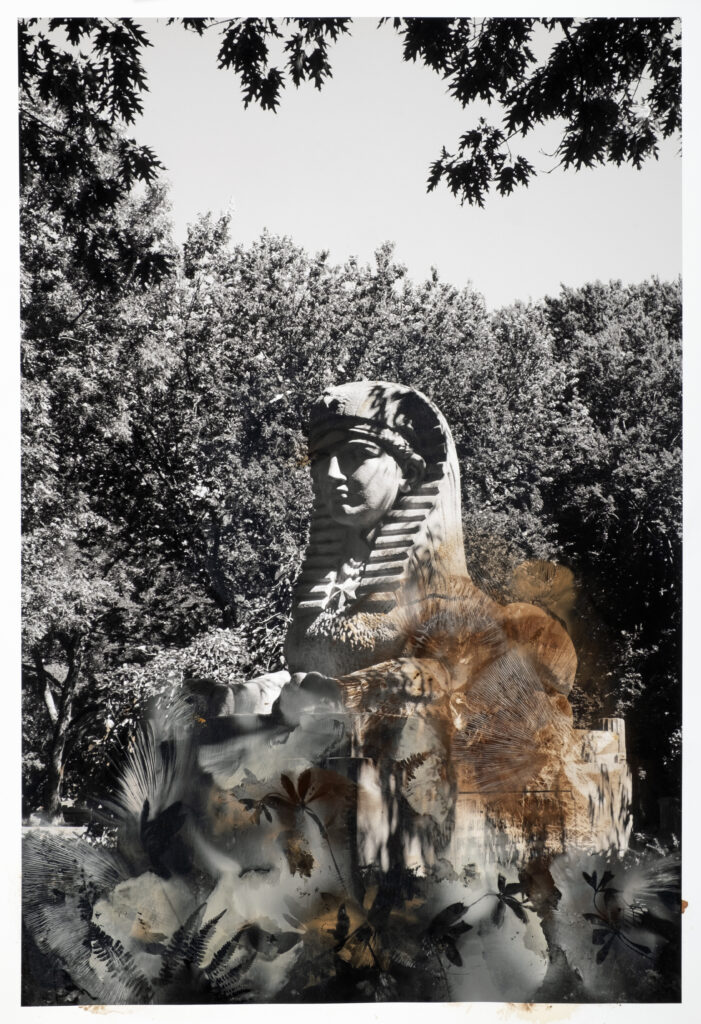
Comments
Comments for this post are closed